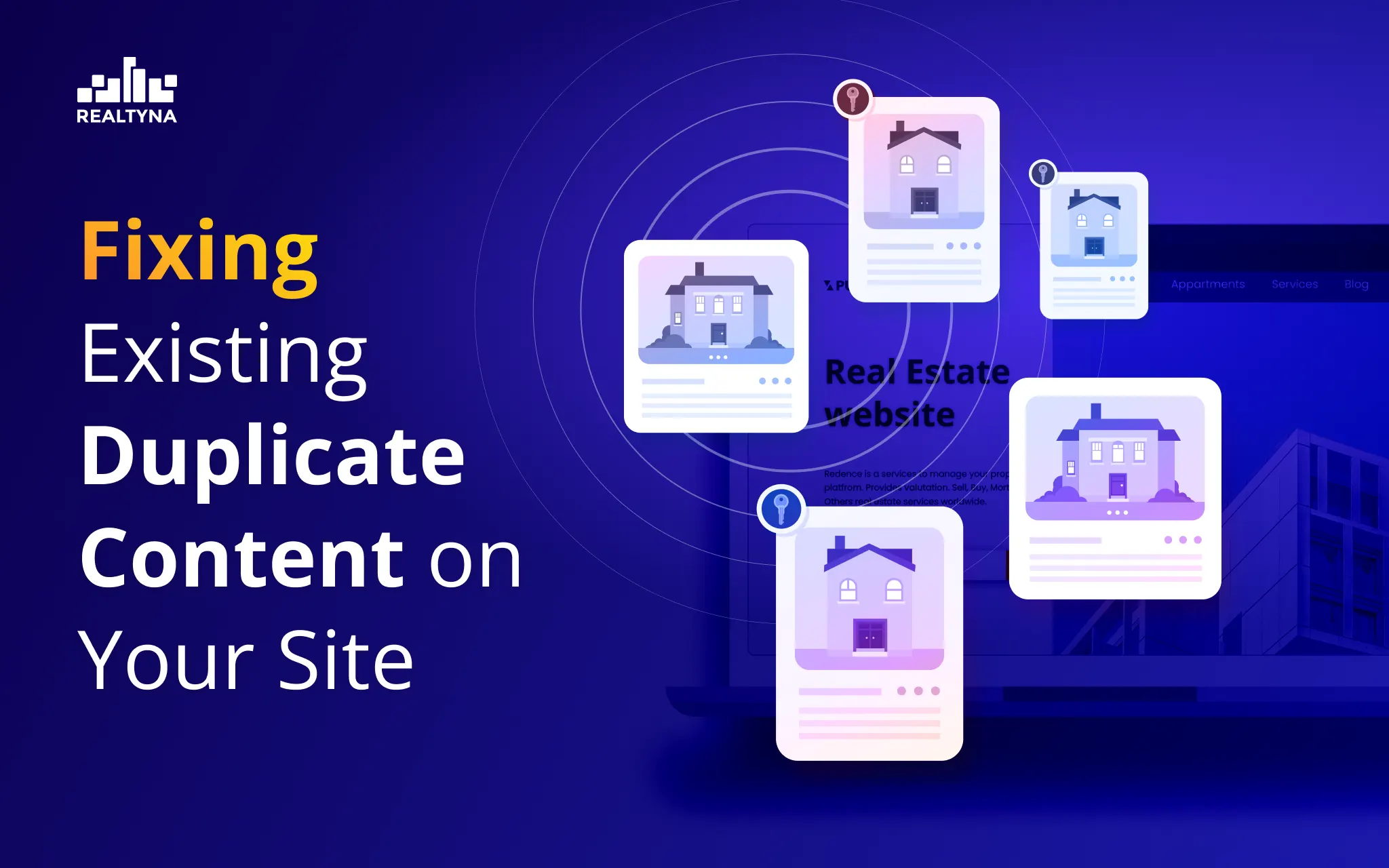
Duplicate Content: A Guide for Real Estate Websites in 2024
Duplicate content refers to substantive blocks of text or code that appear on the internet in more than one location. This could be the same content appearing across different pages on your website or even across different websites entirely.
While some duplicate content is unavoidable, too much of it can negatively impact your search engine rankings and visibility. Search engines aim to show users the original, high-quality sources – not duplicates.
Real estate websites are particularly prone to duplicate content issues due to listing syndication across multiple sites and portals. Reusing listing descriptions verbatim from an MLS feed or other source can result in content duplication penalties.
Beyond just listings, duplicate issues on real estate sites can also arise from:
- Republishing blog posts or articles elsewhere
- Printing the same area/neighborhood descriptions across many pages
- Scraping content from other real estate sites
Identifying Duplicate Content on Your Real Estate Website

Use tools like Siteliner, Copyscape, and other SEO tools to identify duplicate content issues.
These will crawl your site, analyze content, and flag pages with high duplication levels or matched text across domains.
Some key areas to audit:
- Listing detail pages
- Location/city landing pages
- Blog and guide sections
- Boilerplate page templates and footers
Prioritize fixing the most egregious cases first – pages with complete duplication across many URLs. But also watch for smaller duplications that add up over time.
Fixing Existing Duplicate Content on Your Site

Conduct a Site Audit
The first step is to perform a comprehensive site audit to identify pages with duplicate content.
Prioritize Important Pages
Once you have a list of duplicate pages, prioritize the most important ones. These are typically high-traffic pages that significantly impact your website’s overall performance.
Implement Canonical Tags
For pages with similar or duplicate content, implement canonical tags to indicate the preferred version to search engines. This helps consolidate link equity and avoids potential penalties.
Utilize 301 Redirects
If you have multiple versions of the same page, use 301 permanent redirects to point users and search engines to the canonical version. This ensures that the correct page is indexed and ranked.
Update or Remove Duplicate Content
In some cases, it may be necessary to update or remove duplicate content entirely. Rewrite or consolidate the content into a single, comprehensive page that provides unique value to your users.
Monitor and Maintain
Fixing duplicate content is an ongoing process. Regularly monitor your website for new instances of duplication and take prompt action to maintain a clean and efficient site structure.
That’s almost everything you need to know.
By auditing your site, addressing thin content, and taking strategic action to differentiate pages from shared content, you can minimize duplication and its impacts.
With the right technical and content strategies, you can turn duplicate content from a challenge into an opportunity to stand out.


Sorry, the comment form is closed at this time.